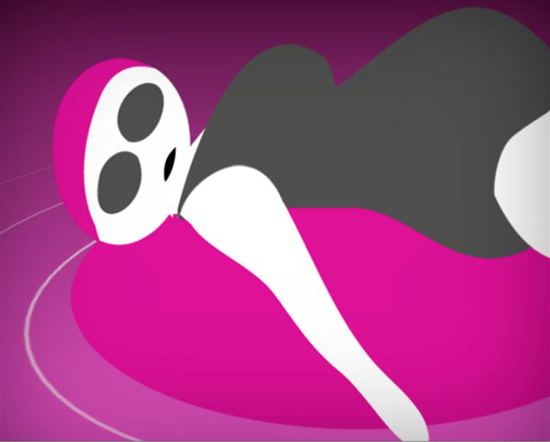YOU_ser 2.0is a further development of the successful show YOU_ser: The Century of the Consumer, which has already been mounted from October 2007 at the ZKM | Media Museum. As an "exhibition in progress" parts of the presentation have been constantly augmented with new works and exhibits have been replaced. The works now arriving are meant to imprint the participatory revolution through Web 2.0 more strongly into the exhibition context.
The Rise of the Machines and Masses:For the time being, the Web 2.0 revolution is an achieved form of some tendencies of the technological revolution, which has its roots in the Enlightenment and was first realised comprehensively in the industrial revolution of the machines. The rise of the machines and the masses, which came about in the 19th century, first perturbed philosophy and art in the 20th century (José Ortega y Gasset, "The Revolt of the Masses", 1929, David Riesman, "The Lonely Crowd", 1950, Pontus Hultén "Machine as Seen at the End of the Mechanical Age", 1968). The first lesson from the uprising of the machines and the masses was a general mobilisation, which surfaces through a bifurcation: 1. The material and the physical mobility through technology based on wheels (car, train, cycle etc.), 2. The immaterial and semiotic mobility via signage. Until ca. 1840, every message needed a messenger, every piece of news a body, every piece of information a bearer (doves, soldiers, ships, cars, runners, horses brought the news). Transmitting news by wireless, that is incorporeal transmission of signs only functioned among angels. From fax, phone and television etc. onwards, signs were transmitted via electromagnetic waves, which are incorporeally and invisibly. The signs travelled independently of any embodiment. The messages had no messengers, the news no bodies. This immaterial incorporeity of signals led to an explosion in communication via signs and in information. Physical and virtual, material and immaterial mobility led to a massive increase in individual mobility, but also to an increase in the mobility of the masses.
The Rainbow Colours of Democracy:DThe second revolution followed hard on the heels of mechanisation, namely the humanisation of nature and the humanisation of work. The technical tools were developed to make work easier and to free humans from the load and burden of nature. Technology humanises nature, technological art humanises art.Mobilisation, mechanisation and humanisation were followed by the third revolution, namely the democratisation of knowledge, access for all to information. Technology transformed science and culture in stages from a medium of elites into a medium of the masses. If in his novel "The Red and the Black" (1830) Stendhal points out that a child of the masses could in the 19th century only go up in the world via the black soutane, that is the church, or via the red coat of the military, then an equivalent novel form today would have to cite all the colours of the rainbow. Today a child of the masses can, namely, go up in the world in many more disciplines than previously, via technology and its effects, via sport and entertainment. These are the rainbow colours of democracy, which are open to the child of the masses today for its career. The worldwide net forms the universal library and the universal platform for the creativity of the masses. If, according to Otto Rössler, chaos is a universal library and evolution the counter principle, we can paraphrase: Web 2.0 and its search engines form an evolutionary library, are a contribution to the evolution of humanity, an anthropotechnology, a technology for humanity’s becoming human.
The New Subject: the Consumer:The fourth revolution consists of the progressive personalisation of the technological tools. From the mobile personal telephone to the personal computer, we see an ubiquitous technology, which is at the individual's disposal around the clock, so that the impression arises that each individual would be dwelling at the centre of their world and the universe, or respectively, their environment would be constantly accommodating their personal needs.The sum of these multiple revolutions gives rise to the chance for emancipation. After the historical subjects of history like the slave or the worker, there is today a new subject, who could become the agent of change: the consumer. With the help of technology, which allows a personalised access to the environment, the consumer gets the option of emancipating themself, that is, of freeing themself from their environment. The consumer learns through personalised technology that they are part of the environment and so can participate in the environment and its shaping. Participating in the world, participating in the construction of art shows the subject as part of the world, but also as a participant, who interacts with the world and has the chance of the world reacting to them. Whoever participates, is active. The emancipated consumer can change the world by being a participant. There are, then, reasons for acting ("Raisons d'agir", as the programme of the French sociologist, Pierre Bourdieu, has it). The audience's participation in the creation of works in the museum is the training-ground for the consumer's emancipation. In its exhibition YOU_ser 2.0: Celebration of the Consumer the ZKM engages with the effects on art and society of net-based, global creation and demonstrates for the first time in technologically advanced installations the link between "user generated content" and contemporary art. The new installations presented in the exhibition transfer the potential for users’ creative collaboration developed in the internet into an artistic context and enables the visitors to emancipate themselves. They can act as artists, curators and producers. Visitors to the exhibition are central as users, as emancipated consumers. YOU are the content in this exhibition! YOU are a part of the universe: YOUniverse. YOU are the user of the world and part of the world, and with that a participant in the world. Whoever is a part of the world also bears some responsibility for the world, of which they are a part. Through their participation, the YOU, the user, has the chance to change the world. In the most technologically advanced environments and installations, the most recent state of the art of participation, pARTicipation, is being shown. That reinforces that tendency, which becomes established in the spirit of the enlightenment for democracy, for untrammelled access to education for all and for the creativity of all. Curated by Peter Weibel Guided Tours Sun 4pm.
KunstfreundeThe "Friends" of the ZKM | Museumskommunikation regularly offer further information on the artworks in the exhibition. Their information programme is supported by EnBW, the main sponsor of the exhibition. |

